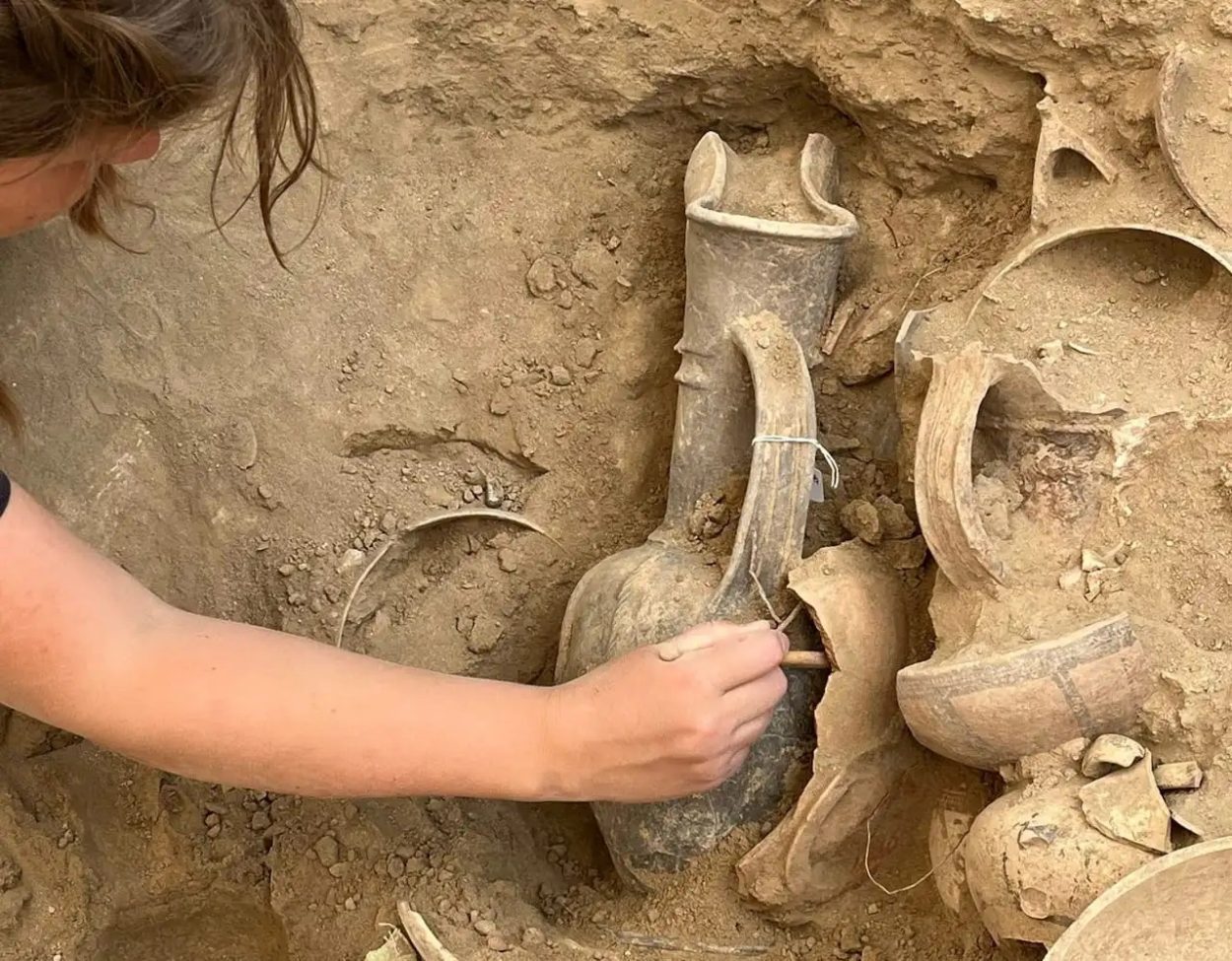Archaeologists from the University of Gothenburg have uncovered royal tombs near the Bronze Age city of Dromolaxia Vizatzia, located at Hala Sultan Tekke on the south eastern coast of Cyprus.
The tombs date from the around 1500 to 1300 BC during a period when the city was a centre for the copper trade, which according to the researchers are among the “richest” tombs ever discovered in the Mediterranean region.
Professor Peter Fishcher from the University of Gothenburg said: “It is a reasonable assumption that these were royal tombs, even though we do not know much about the form of government practiced in the city at the time.”
The site was discovered using magnetometers, a device used for measuring the Earth’s magnetic field in geophysical surveys to detect magnetic anomalies of various types, and to determine the dipole moment of magnetic materials.

“We compared the site where broken pottery had been ploughed during farming with the magnetometer map, which showed large cavities one to two metres below the surface. This led us to continue investigating the area and to discover the tombs,” said Professor Fischer.
The tombs consist of underground chambers each measuring up to 4 x 5 metres, which are accessed via a narrow passageway from the surface. Inside two of the chambers the team found over 500 complete artefacts, consisting of precious metals, gems, bronze weapons, ivory, high-status ceramics, and a gold-framed seal made of haematite.
Around half of the tomb contents were imported from neighbouring cultures and civilisations. Gold and ivory came from Egypt, precious stones were imported from Afghanistan, India and Sinai, while amber objects came from the Baltic region.
Excavations also revealed several well-preserved skeletons, including a burial containing a woman who was found surrounded by dozens of ceramic vessels, jewellery and a round bronze mirror.
Professor Fishcher, said: “Several individuals, both men and women, wore diadems, and some had necklaces with pendants of the highest quality, probably made in Egypt during the 18th dynasty at the time of such pharaohs as Thutmos III, and Amenophis IV (Akhenaten) and his wife Nefertiti.”
Header Image Credit : Professor Peter Fishcher

